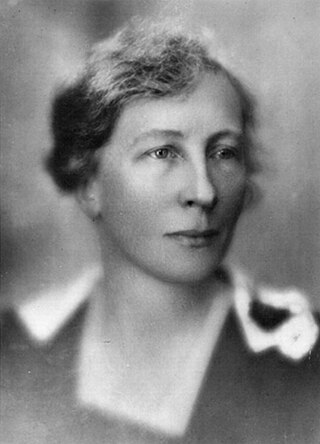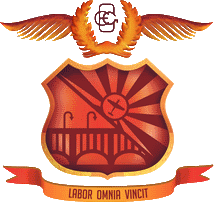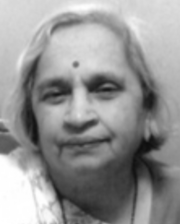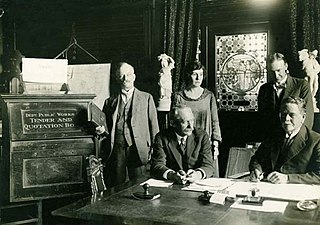Related Research Articles

Lillian Evelyn Gilbreth was an American psychologist, industrial engineer, consultant, and educator who was an early pioneer in applying psychology to time-and-motion studies. She was described in the 1940s as "a genius in the art of living." Gilbreth, one of the first female engineers to earn a Ph.D., is considered to be the first industrial/organizational psychologist. She and her husband, Frank Bunker Gilbreth, were efficiency experts who contributed to the study of industrial engineering, especially in the areas of motion study and human factors. Cheaper by the Dozen (1948) and Belles on Their Toes (1950), written by two of their children tell the story of their family life and describe how time-and-motion studies were applied to the organization and daily activities of their large family. Both books were later made into feature films.

Anna University is a public state university located in Tamil Nadu, India. The main campus is in Chennai. It was originally established on 4 September 1978 and is named after C. N. Annadurai, the former Chief Minister of Tamil Nadu.

Emily Warren Roebling was an engineer known for her contributions over a period of more than 10 years to the completion of the Brooklyn Bridge after her husband Washington Roebling developed caisson disease and became bedridden. She served as a liaison and supervisor of construction through communicating between her husband and on-site personnel. Her husband was the chief engineer during construction of the Brooklyn Bridge, which had been designed by his late father, John A. Roebling.

The College of Engineering, Guindy (CEG) is a public engineering college in Chennai, India and is Asia's oldest technical institution, founded in 1794. It is also the oldest technical institution to be established outside Europe.
Elsie Eaves was a pioneering American female engineer, the first female associate member of the American Society of Civil Engineers (ASCE), and a founding member of the American Association of Cost Engineers.

Sugathakumari was an Indian poet and activist, who was at the forefront of environmental and feminist movements in Kerala, South India. Her parents were the poet and freedom fighter Bodheswaran and V. K. Karthiyayini Amma, a Sanskrit scholar. She was the founder secretary of the Prakrithi Samrakshana Samithi, an organisation for the protection of nature, and of Abhaya, a home for destitute women and a day-care centre for the mentally ill. She chaired the Kerala State Women's Commission. She played a prominent role in the Save Silent Valley protest.

Sujatha Mohan is an Indian playback singer who is popular for singing in Malayalam, Tamil and Telugu movies. She has also sung for Kannada, Badaga, Hindi and Marathi and more languages movies. In a career spanning 48 years, she has recorded more than 7,000 songs to date.

Dame Caroline Harriet Haslett DBE, JP was an English electrical engineer, electricity industry administrator and champion of women's rights.
The Central Public Works Department is the Indian government authority in charge of public sector works. The CPWD, under the Ministry of Urban Development now MoHUA, deals with buildings, roads, bridges, flyovers and other complicated structures including stadiums, auditoriums, laboratories, bunkers, border fencing and border roads. The CPWD came into existence in July 1854 when Lord Dalhousie established a central agency for execution of public works and set up Ajmer Provincial Division. It has now grown into a comprehensive construction management department, which provides services from project conception to completion, and maintenance management.

Verena Winifred Holmes was an English mechanical engineer and multi-field inventor, the first woman member elected to the Institution of Mechanical Engineers (1924) and the Institution of Locomotive Engineers (1931), and was a strong supporter of women in engineering. She was one of the early members of the Women's Engineering Society, and its president in 1931. She was the first practising engineer to serve as president of the society.

The history of women in engineering predates the development of the profession of engineering. Before engineering was recognized as a formal profession, women with engineering skills often sought recognition as inventors. During the Islamic Golden Period from the 8th century until the 15th century there were many Muslim women who were inventors and engineers, such as the 10th-century astrolabe maker Al-ʻIjliyyah.

Mary Poonen Lukose was an Indian gynecologist, obstetrician and the first female Surgeon General in India. She was the founder of a Tuberculosis Sanatorium in Nagarcoil and the X-Ray and Radium Institute, Thiruvananthapuram, served as the head of the Health Department in the Princely State of Travancore and was the first woman legislator of the state. The Government of India awarded her the fourth highest Indian civilian award of Padma Shri in 1975.

Dorothy Norman Pearse née Spicer (1908–1946) was an English aviatrix, and the first woman to gain an advanced qualification in aeronautical engineering.

Venkatramaiah Shantha Kumari popularly called "Shanthakka" is the current Chief of the Hindu nationalist women's organisation Rashtra Sevika Samiti. She took charge as Chief in 2013.

Rao Sahib Ayyathan Gopalan, popularly known as Darsarji and Darsar Sahib, was an Indian doctor, surgeon, professor, writer, philanthropist, social reformer, and Renaissance leader from Kerala. He is the founder of the Sugunavardhini movement (1900) and Depressed classes mission (1909) and also the leader and propagandist of Brahmo Samaj (1893) in Kerala. He denounced idol worship and fought to end those social practices in Kerala that he thought were unethical. Among his followers were Brahmananda Swami Sivayogi, Vaghbatananda, and Brahmavadhi P. Kunhiraman. Gopalan titled P. Kunhiraman as "Brahmavadhi" and Sivayogi as "Brahmananda Swami".

Ayyalasomayajula Lalitha was India's first female engineer.

Veera Ramani is a 1939 Indian Tamil-language action film written and directed by K. Amarnath. The film stars K. T. Rukmini and P. S. Srinivasa Rao. It revolves around a man who takes to burglary due to circumstances beyond his control, and his lover who becomes a vigilante after seeing his predicament. The film was released on 11 February 1939 and became a success.

Shakuntala A. Bhagat, born Shakuntala Joshi, was the first woman civil engineer in India.

Kathleen M. Butler was nicknamed the “Godmother of Sydney Harbour Bridge”. As the first person appointed to Chief Engineer J.J.C, Bradfield’s team, as his Confidential Secretary,, she managed the international tendering process and oversaw the development of the technical plans, travelling to London in 1924 to supervise the project in the offices of Dornan’s, the company which won the tender. At the time it was built, Sydney Harbour Bridge was the largest arch bridge in the world, with the build expected to take six years to complete. Her unusual role garnered much interest in the press in Australia and Britain.

Marie Schneiderová-Zubaníková was a Czech civil engineer and architect. She was the first woman to qualify as a civil engineer in Czechoslovakia.
References
- 1 2 3 4 5 6 7 8 Mohan, Shantha R. (2018). Roots and wings : inspiring stories of Indian women in engineering. Chennai, India: Notion Press. ISBN 978-1-64429-132-0. OCLC 1054198087.
- 1 2 3 "PK Thresia: The Forgotten Story of India's First Woman Chief Engineer". The Better India. 2019-09-10. Retrieved 2020-08-21.
- ↑ Ponvannan, Gayathri. Unstoppable : 75 stories of trailblazing Indian women. Gurgaon. ISBN 978-93-88322-01-0. OCLC 1085964222.
- 1 2 "Women Engineers of CEG". AACEG. Retrieved 2020-08-21.
- ↑ mbcet (2017-07-09). "P.K. Thressia: India's First Woman Chief Engineer". Engineering, Science & Technology Resources Portal. Retrieved 2020-08-21.